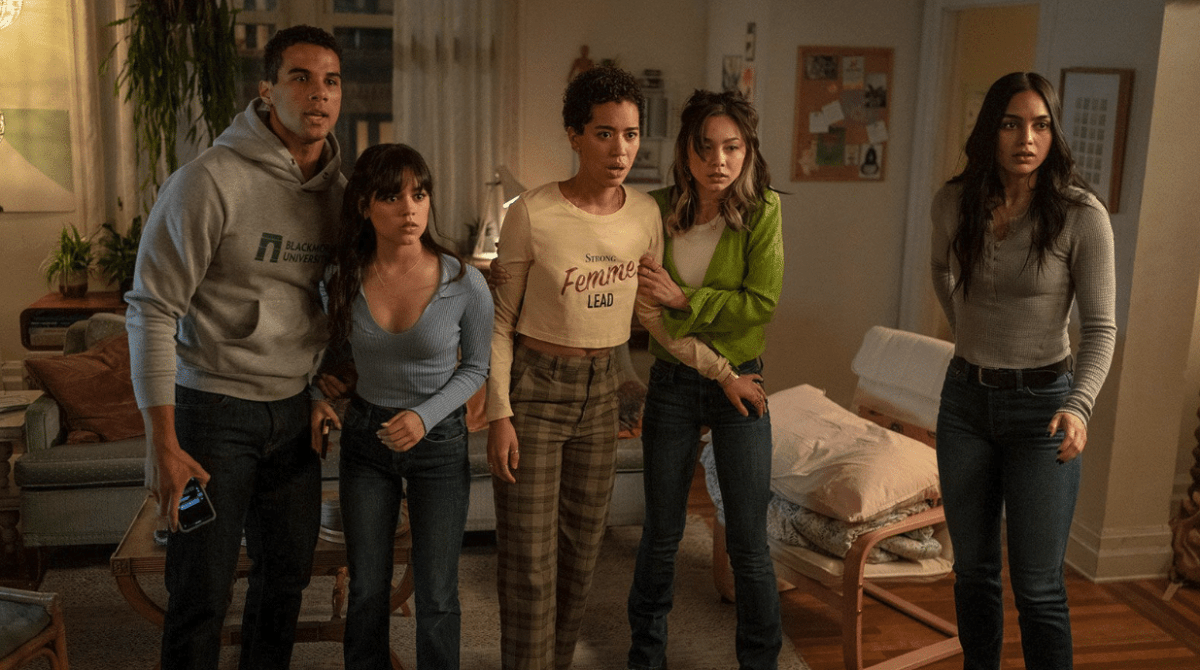‘In times of terror, people want to be terrified.’ That’s how director of the Hostel films, Eli Roth, explained why audiences flocked to his gory extravaganza when the horrors of Guantanamo Bay were all over the news.
The pandemic is terrifying: do we want to be terrified? There certainly seems to be a fresh wave of blood flooding our screens. But do these horrifying hits reveal a distinct social allegory, or are we simply eating up what the streaming algorithms spit out?
It can be difficult to get accurate measurements of streaming numbers: they’re disclosed at the discretion of platforms. What seems popular might just be what’s in your bubble: a curated list of trends and word-of-mouth generated by social media. Box office smashes in the early 2020s owe a lot more to a lucky release date than they do to genre or quality.
Read: Are these the scariest horror films ever made?
What seems clear, though, is this: audiences flock to horror in times of strife. There are stark correspondences between social anxieties and cinematic terrors. Horror movies aren’t documentaries: the genre uses abstraction, hyperbole, and fantasy to exaggerate and complicate real fears. Sometimes it’s described as ‘echoing’ reality, but ‘echo’ isn’t always a useful metaphor. Horror isn’t simply a softer repetition of the original event.
If horror ‘reflects’ reality, it’s through a funhouse mirror, reversing and distorting the original for our amusement. More than just catharsis, we use horror to explore problems and challenge ourselves – a ‘thrill’ isn’t always a bad thing.
Read: Evil Dead Rise – run the bloodbath
There are obvious historical parallels between major horror trends and public sentiments. 1950s alien invasion movies held up a critical lens to the Red Scare, challenging audiences with tragic monsters and military overreach. The conservative period of the 1980s embraced slasher films, where suburban stalkers punished unruly youths. During the War on Terror, a wave of ‘torture porn,’ a zombie revival, and found footage articulated public fears around torture camps, bioterrorism, and surveillance.
A brief lull followed as the Purge and Conjuring franchises rode that wave to the shore. Then Donald Trump was elected in 2016, Brexit became a reality, and governments across the world took a hard swing to the right. Many predicted that Trump’s reign would reignite the horror genre. Covid triggered a horrific social crisis, but the western political climate was terrifying in the preceding four years, too. The groundwork laid for the pandemic was laid before 2020, with crumbling infrastructure and dismal public health.
Read: Skinamarink – an audaciously boring horror
Similarly, the latest horror wave built groundswell in the late 2010s. Jordan Peele’s Get Out and Us revolutionised the genre. Both are considered as articulations of the growing racial and class-based tension in Trump’s America—though Peele fantastical metaphors to avoid being heavy-handed. Indie successes like Annihilation, Raw, Hereditary, and Train to Busan paved the way for studio confidence in A Quiet Place and It.
Look out: it’s 2020!
In 2020, everyone suddenly had a lot of free time and even more anxiety. The pandemic is truly global, unlike many horror-defining events that centre on the American political climate. Horror productions from Germany and South Korea aren’t just successful because Netflix effectively promotes non-English content through its algorithm: they’re able to speak to recognisable social problems across cultures.
Smaller productions found captive audiences: The Night House, The Empty Man, Relic, Host, Psycho Goreman, Smile, Fresh, Bodies Bodies Bodies, Barbarian, and Skinamarink were cult and critical successes. Horror auteurs like Peele, David Croenenberg, Ti West, and James Wan delivered fresh thrills. Remakes and sequels of major franchises seized the moment: Candyman, Spiral, The Invisible Man, A Quiet Place Part II, Army of the Dead, two instalments of Scream. The last of these, Scream VI, seems to have found a renewed glide in its stride in the latest iteration:
Scream VI kicks off in the traditional way: a cameo from a fresh blonde scream queen whose character considers herself a horror aficionado. Things take an interesting turn from there, launching into the most engaging Scream movie since the original. We’ve finally left the sleepy town of Woodsboro, long plagued by a masked killer Ghostface. The new generation of teens have moved to New York, but their past soon catches up with them.
ScreenHub reviews Scream VI
And that’s just films: horror TV has had a major wave since 2016, too. Streaming audiences have eaten up Mike Flanagan’s Haunting shows, Yellowjackets, Lovecraft Country, Guillermo del Toro’s Cabinet of Curiosities, Interview with the Vampire, and The Last of Us, and All of Us are Dead.
Read: Yellowjackets S2 review – these women might do anything
The latter two are the only zombie shows of the bunch: you’d think the undead would make the most obvious pandemic allegories, but it’s too on the nose. We hit peak zombie fatigue when survival kits and spooky cookbooks flooded every gift shop in the early 2010s: there’s simply nothing fresh to say, especially when it shuffles too close to lived experience.
Read: The Last Of Us Season One review
Unlike history’s waves of slashers and aliens, it’s hard to pin down a definitive theme in 2020s horror. There’s no recurring monsters. But there’s many haunted houses and home invasions: the horror of home itself becomes eerily obvious in the age of lockdowns.
In the 2020s, horror has followed us home. It’s exactly the right recipe to petrify a housebound audience.
Jason Blum, head of Blumhouse productions, predicts the horror bubble will soon burst. It’s never been a mainstream genre. The bigger Hollywood productions are, the harder a dud will ultimately fall.
But if horror movies have taught us anything, nothing’s ever quite as dead as you hope it will be.





